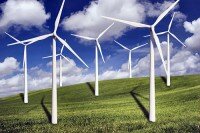How low-carbon are different generating technologies?
Posted in Technology on 12/09/2009 09:48 am by Stephen Tindale No form of electricity generation is entirely free of carbon emissions. The UK’s Sustainable Development Commission sums this up well:
No form of electricity generation is entirely free of carbon emissions. The UK’s Sustainable Development Commission sums this up well:
“No energy technology is currently carbon free. Even renewable technologies will lead to fossil fuels being burnt at some point in their construction due to the high levels of fossil fuel usage in almost every transport mode and industrial process, including electricity generation. For example, wind turbines are built of steel, and fossil fuels are therefore consumed in their construction either directly, during manufacture, and also from petroleum usage when the parts are transported to the construction site. However, the fossil fuel used over the life of the turbine is ‘repaid’ in less than 10 months, as the turbines themselves generate zero carbon energy.”
(See SDC position paper: The role of nuclear power in a low carbon economy.)
The UK Energy Research Centre published a report in 2006 stating that:
“CCS fitted on conventional supercritical coal plant will have an overall emission of 50 – 90g CO2/kWh electricity (compared to 950g CO2/kWh without CCS); gas would be about 400gCO2/kWh without CCS. Comparable full-life-cycle evaluations, using the same analytical system, for wind are 25g CO2/kWh, photovoltaic 110g CO2/kWh, and nuclear 30 -120g CO2/kWh.”
(See UKERC: Response to the Treasury Consultation on Carbon Capture and Storage.)
If we take the top of the range for CCS and nuclear, this gives the following figures, compared to conventional coal generation (100%):
|
% |
|
| Gas without CCS |
42 |
| Nuclear |
12.5 |
| Solar pv |
11.5 |
| Coal with CCS |
9.5 |
| Wind |
2.5 |
The Sustainable Development report quoted above goes on to say that
“… taking into account the emissions associated with plant construction and the fuel cycle, the emissions associated with nuclear power production are relatively low, with an average value of 4.4tC/GWh, compared to 243tC/GWh for coal and 97tC/GWh for gas. However, emissions from decommissioning and the treatment of waste also need to be assessed but this is difficult for two main reasons:
- in the UK, decommissioning of existing plant is highly complex and involves plant that was not designed with decommissioning in mind,
- the UK has not decided on its approach to waste management, which makes it difficult to assess the associated CO2 emissions.
The carbon impact associated with the ‘back-end’ of the nuclear fuel cycle is spread across all of the UK’s nuclear power plants (active and decommissioned) and includes all of the electricity generated over their lifetime. Newly commissioned plants are likely to have lower life-cycle carbon emissions than for previous reactor designs, because of improvements in plant design (for example, smaller size, and improved thermal efficiency and use of fuel), and because new plant is designed so that it can be dismantled and decommissioned more easily.”
(See SDC position paper: The role of nuclear power in a low carbon economy.)
These figures indicate that nuclear produces only 2% of the carbon emissions of coal and 4.5% of gas. (This does not include decommissioning and waste management emissions, but these could not conceivably increase emissions to anywhere near the fossil fuel levels.) It is worth noting that this was a Sustainable Development Commission Report re-affirming its position against nuclear power, on cost, waste management and proliferation grounds. Therefore, it cannot be dismissed as pro-nuclear ‘greenwash’.


